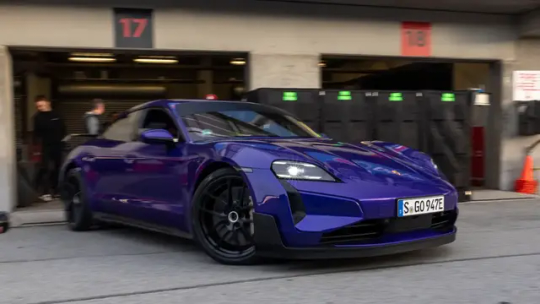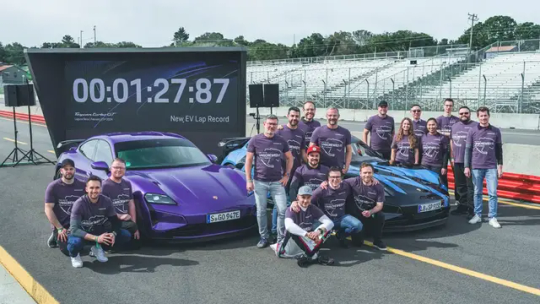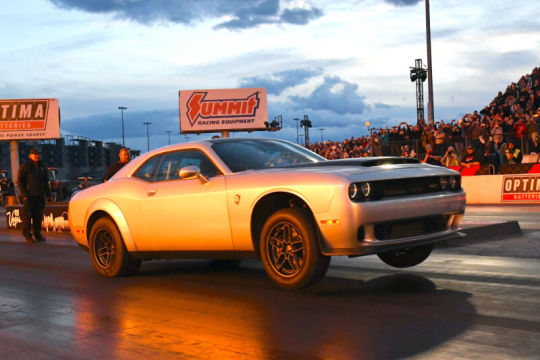#tesla model S plaid
Explore tagged Tumblr posts
Text
Check out this website! ElonMuskVision.com
#tesla corporation#tesla cars#tesla roadster#tesla model 3#tesla motors#tesla model s plaid#tesla model y recalled#spacex#elonmusk
1 note
·
View note
Text
Tribute by Tesla
Check out the full video of a tribute to RRR song Naatu Naatu by Tesla Electric in USA.
youtube
0 notes
Video
youtube
Tesla Model S Plaid yoke wheel review
Bjørn Nyland
P.S. Really shitty design...! A classic example of how one person's whims ruin a generally good car...! The Tesla Model S Plaid is very poorly suited to European roads, perhaps the only exception being motorways where you don't have to turn the steering wheel much...Also, outside of Germany, there is NO other country in Europe where you can legally use this car's massive power. As such, and from a practical standpoint, the Tesla Model S Plaid is a completely pointless purchase... whose sole function is to demonstrate that some rich man doesn't know where to put his money...
#Tesla Model S Plaid#ev review#ev test drive#driving#yoke wheel#electric car#electric vehicle#Europe
1 note
·
View note
Text
Why All Eyes Are On Arkansas’ Lithium
youtube
Nonetheless, Bill Clinton is supporting Tesla (with sinister intentions indeed). The typical Democrat corruption.
0 notes
Text
Motorcyclists vs Plaid Model S. Bikers wanted to have fun. Plaid Model S is ⚡. 🎥X/ultraredplaid
0 notes
Text

Tesla Plaid Badge from the Fastest Production Car Ever Made Model S Tesla Plaid
by WigOutlet
Tesla Plaid Badge from the Fastest Production Car Ever Made Model S Tesla Plaid
0 notes
Text
Top 10 Most Anticipated Tech Releases of the Year
The tech world is constantly evolving, and every year brings new products and technologies that revolutionize the way we live and work. 2023 is no exception, and we’ve compiled a list of the top 10 most anticipated tech releases of the year. From smartphones to gaming consoles to smart homes, these products are sure to make a big impact. iPhone 16 The latest iteration of the iPhone is always a…

View On WordPress
#Amazon Echo Show 12#Apple Watch Series 8#Google Pixel 7#iPhone 16#Microsoft Surface Pro 9#Oculus Quest 3#Samsung Galaxy S23#Sony PlayStation 6#Tech Releases#Tesla Model S Plaid+#Xbox Series X2
1 note
·
View note
Text
The 1,100bhp Porsche Taycan Turbo GT SMASHES Tesla Model S Plaid lap record at Laguna Seca Raceway with a time of 1.27.8s 5 seconds faster than the Tesla


#porsche#autos#lamborghini#nurburgring#car design#cars#vintage car#concept car#classic car#tesla#teslalife#laguna seca#le mans#thefastestaround#usa#america#fastest lap#laptimes
9 notes
·
View notes
Text
Tesla Model S Plaid does 328 km/h sur l'autoroute où 204 mph on Autobahn
7 notes
·
View notes
Photo

(via The 2023 Dodge Challenger SRT Demon 170 will do 0-60 in just 1.66 seconds | Ars Technica)
Dodge is seeing out the Hemi V8 muscle car era with a 1,025 hp version.
Dodge has been on something of a farewell tour for its Hemi V8 muscle cars. It has built a series of "last call" versions of the Charger and Challenger, limited editions with callback paint colors and retro liveries that refer to muscle-packed Dodges of old. Now it really is getting ready to end the car design and is doing so with a bang, via the 2023 Challenger SRT Demon 170, a production car so fast it can even show a Tesla Model S Plaid a clean pair of shoes with a 1.66 second 0-60 mph time. Dodge's engineers have performed quite a bit of work under that bulging "Air-Grabber" hood compared to lesser Demons. There's a new supercharger with a larger throttle body and a pulley that increases boost pressure by 40 percent compared to the Challenger Hellcat Redeye Widebody. You'll get the best results by feeding it E85 (a blend of 85 percent ethanol and 15 percent gasoline); on this fuel, the Demon 170 generates an enormous 1,025 hp (764 kW) and 945 lb-ft (1,281 Nm). On the more common E10 fuel, the engine will generate a slightly milder 900 hp (671 kW) and 810 lb-ft (1,098 Nm).
jeebus - they’re not fucking around
46 notes
·
View notes
Text
The Ultimate Guide to Electric Cars: Best Choices, Affordable Options, and Everything You Need to Know

Top Picks for Electric Vehicles in 2024
A number of variables need to be taken into account while selecting the best electric car, including performance, design, technology, and range. Here are some of the standout models for 2024:
1. Tesla Model S Plaid
The Tesla Model S Plaid is a benchmark in the electric car market. With a range of over 390 miles and a 0-60 mph time of just 1.99 seconds, it sets the standard for luxury and performance in the EV segment.
Range: 390+ miles
Top Speed: 200 mph
Key Features: Autopilot, Full Self-Driving capability, 1,020 horsepower
2. Lucid Air
The Lucid Air is a luxury electric sedan that combines futuristic design with remarkable performance. With a range of up to 520 miles, it currently offers the longest range of any EV on the market.
Range: Up to 520 miles
Top Speed: 168 mph
Key Features: Lucid DreamDrive, spacious interior, 1,111 horsepower in the Dream Edition
3. Porsche Taycan
For those seeking a sports car experience, the Porsche Taycan delivers with its iconic handling and design. Available in several variants, the Taycan offers an exhilarating driving experience with rapid acceleration.
Range: Up to 256 miles
Top Speed: 161 mph
Key Features: Porsche Electric Sport Sound, 800-volt architecture, advanced regenerative braking
Cheapest Electric Cars: Affordable EV Options
Electric cars are becoming increasingly affordable, making them accessible to a broader audience. Here are some of the best budget-friendly electric cars:
1. Nissan Leaf
The Nissan Leaf is one of the most popular and affordable electric cars on the market. It’s ideal for city driving and offers a solid range for daily commutes.
Range: Up to 149 miles
Starting Price: ,800
Key Features: ProPILOT Assist, e-Pedal, affordable maintenance costs
2. Chevrolet Bolt EV
The Chevrolet Bolt EV is a compact electric car that offers a surprising amount of range and features for its price point.
Range: Up to 259 miles
Starting Price: ,000
Key Features: DC fast charging capability, roomy interior, high safety ratings
3. Hyundai Kona Electric
The Hyundai Kona Electric is a subcompact SUV that blends affordability with functionality, offering an impressive range for its class.
Range: Up to 258 miles
Starting Price: ,000
Key Features: 8-inch touchscreen, regenerative braking, adaptive cruise control
Best Electric SUVs: Top Performers in the SUV Segment
SUVs remain one of the most popular vehicle types, and the electric SUV segment is growing rapidly. Here are the best electric SUVs to consider:
1. Tesla Model Y
The Tesla Model Y is a versatile electric SUV that combines the performance and technology of the Model 3 with more cargo space and an elevated driving position.
Range: Up to 330 miles
Top Speed: 135 mph
Key Features: Dual motor all-wheel drive, panoramic glass roof, Autopilot
2. Ford Mustang Mach-E
The Ford Mustang Mach-E is a bold new entry into the electric SUV market, blending the iconic Mustang design with modern electric performance.
Range: Up to 300 miles
Top Speed: 124 mph
Key Features: Ford Co-Pilot360, 15.5-inch touchscreen, Mustang-inspired design
3. Audi e-tron
The Audi e-tron is a premium electric SUV that offers a luxurious interior and smooth, quiet driving experience.
Range: Up to 222 miles
Top Speed: 124 mph
Key Features: Quattro all-wheel drive, Virtual Cockpit, adaptive air suspension
Electric Cars for Sale: Where to Find the Best Deals
Finding the right electric car at the best price requires a bit of research. Here are some top places to look for electric cars for sale:
1. Certified Pre-Owned (CPO) Programs
Many automakers offer certified pre-owned programs for their electric vehicles. These programs typically include a thorough inspection and warranty coverage, making them an excellent choice for budget-conscious buyers.
2. Online Marketplaces
Websites like Autotrader, Cars.com, and Carvana offer a wide selection of new and used electric vehicles. These platforms allow you to compare prices, read reviews, and even purchase vehicles online.
3. Dealerships
Local dealerships often have a selection of electric cars, especially in areas where EVs are more popular. Visiting a dealership allows you to test drive the vehicle and speak with a salesperson about available incentives.
Electric Vehicle Charging Stations: Powering Your EV
One of the most critical aspects of owning an electric car is understanding how and where to charge it. Electric vehicle charging stations are becoming more prevalent, but it’s essential to know the types and locations of these stations.
1. Types of Charging Stations
Level 1 Charging: Uses a standard 120-volt outlet. It’s the slowest option, providing about 2-5 miles of range per hour of charging.
Level 2 Charging: Requires a 240-volt outlet, similar to what is used for large appliances like dryers. It provides about 10-60 miles of range per hour.
DC Fast Charging: These stations provide the fastest charge, delivering 60-100 miles of range in about 20 minutes.
2. Finding Charging Stations
Apps like PlugShare, ChargePoint, and Tesla’s own Supercharger network can help you locate charging stations near you. Many modern EVs also have built-in navigation systems that display nearby charging stations.
3. Home Charging Solutions
Installing a home charging station is a convenient option for many EV owners. Level 2 home chargers are the most popular and can be installed in your garage or driveway, allowing you to charge your vehicle overnight.
Electric Vehicles' Future
With developments in battery technology, autonomous driving features, and sustainable materials, the electric vehicle market is growing quickly.
1. Technology of Batteries
Electric vehicle (EV) range, charging times, and overall efficiency may all be significantly increased by further research into solid-state batteries and other cutting-edge technology.
2. Self-Driving Cars
Automakers are making significant investments in autonomous driving technology. The prospect of autonomous vehicles is growing because to initiatives like Tesla's Full Self-Driving Package and other comparable technologies.
3. Ecological viability
There is a growing emphasis on recycling materials and lowering the carbon footprint of manufacturing processes in the creation of electric vehicles, making the process more sustainable. Manufacturers who are spearheading the development of more environmentally friendly production techniques are Tesla and Rivian.
2 notes
·
View notes
Text
Stirling-electric hybrid vehicles are an idea that I keep coming back to, even though this is an idea people far smarter and better at engineering than I have been trying to tackle for a very long time. (The earliest example I can think of is the GMC Stir-Lec from 1969, but it honestly wouldn’t surprise me if someone was trying to build a Stirling electric hybrid when Stanley Steamers were still battling Ford Model Ts.) All the current trends – and regulatory frameworks – are toward full electrification based on giant batteries, but Stirling-electric still captivates my imagination.
A Stirling engine has a lower power-to-weight ratio than an internal combustion engine, but how bad is it? Well, the 1986 NASA project said they had gotten it to 3.35 kg/kW. (Has there been any progress since 1986 on Stirling engines? I don’t know. There have been some new developments with thermoacoustic Stirling engines and such, but I’m not sure they’d be any better than traditional Stirling engines for this application.) With a hybrid, the most sensible approach is to make the heavy Stirling engine as weak as it can be while sustaining a desired top cruising speed – bursts of acceleration are better handled by electrical motors with better power-to-weight ratios.
It’s commonly said that a car only needs maybe 20 hp (15 kW) to cruise at a highway speed of, say, 60 mph/100 kmh. That’s not very marketable, though. If we supposed that a top sustainable speed – the top speed at which you’re burning fuel, but not draining your batteries – should be more like 90 mph, then we might want 1.5^3 = 3.375 times that much power (this is on the pessimistic assumption that air resistance is basically all resistance, since it scales worst (cubically) with speed). Other situations besides speeding, like towing or going up a long-enough upward incline that it wouldn’t just be cleared on battery alone, might also be occasions for sustained power higher than the ~15 kW highway level. So maybe 50 kW. A stirling engine capable of producing that might weigh 170 kg.
For our electric motors, we might want, say, 150 kW, for a marketably peppy response. The motor of a Tesla Model 3 (cited in Wikipedia on a list of power densities) has got 6.26 kW/kg. That might require 30 kg. If we’re going for a serial hybrid rather than a parallel hybrid – with no direct connection between the Stirling engine and the drivetrain, only a connection that bypasses the battery to feed electrical power to the motors directly – then the power going to the tires is just from the electric motors, not the Stirling engine. This might simplify the engineering, though..
Then there are the batteries. If we wanted four minutes of battery power at near-maximum power – making sure to compensate for any lag in the Stirling engine heating up – then we’d want ~100 kW * ~250 seconds = 25 MJ. This is also close to the minimum for an American tax-break eligible plug-in hybrid electric vehicle, which requires a battery of at least 7 kWh, or 25.2 MJ. If we got 0.4 MJ/kg then that’s another 65 kg. One question is whether the battery has enough power, not just enough energy. I am having a hard time finding sources on this. Wikipedia pages on power density seem too pessimistic given what we see out of electric vehicles like the Model S Plaid. (100 kWh battery, 1020 hp ~=760 kW, suggesting that a battery can discharge itself in 8 minutes at most, depending on whether the Plaid is basically designed with motors that are as powerful as possible given its battery.) We might need to double the size of the batteries to power the motors enough.
So we’re adding 265-340 kg to the vehicle so far. There will probably be a bit more – regenerative braking systems, power distributing linkages, etc. On the other hand, we’ve gotta remember that we’re also taking the internal combustion engine out.
Is 280 kg too much? I suppose a comparison might be plug-in hybrids, which are rather heavy on account of an ICE-electric hybrid energy system and a rather large battery. A Subaru Crosstrek conventional has a curb weight of 3298 lbs, while the PHEV weighs in at 3,717 lbs, a difference of 190 kg. The Kia Sportage has a curb weight of 3,373 lbs, while the PHEV version weighs 4211, a difference of 380 kg.
Perhaps with some sort of modular system could add versatility to the fueling types, with different modules for gasoline, compressed natural gas or hydrogen, waste vegetable oil (perhaps a preheater would be good for something that viscous). The Stirling engine might lose a little peak power on some fuels relative to gasoline, but for ordinary, not-too-fast, not-too-hilly cruising that might just mean it runs more and it doesn’t affect the performance too much – although in times of persistent high demand for power, like climbing up a hill, towing a trailer, or just speeding, you might notice the deficiency.
One possible issue is hydrogen embrittlement. If the Stirling engine has a working fluid other than hydrogen, it would be less efficient, while if it’s using materials that are resistant to hydrogen embrittlement, then that might make it less rugged and heavier. I think they used sufficiently embrittlement-resistant stainless steel and hydrogen as a working fluid in the 1986 NASA project, but one way to cheat for a short-term test of a relatively powerful, light Stirling engine would be to just use hydrogen as a working fluid and regular steel engine parts, and if they crack like a week later, that’s after your tests are done.
I don’t really know that much about the details of obstacles to alternative ideas for cars, though. I guess I’ve been a bit car-brained since I became a car owner almost a year ago. I suspect that when you first get a job as an engineer at Ford or Honda, the first thing in your inbox is a Powerpoint attachment titled “Here’s Why We’re Not Going to Consider Your Stupid Alternative Powertrain Ideas.” Maybe if someone could leak that to me that would give me some clarity.
I guess Dean Kamen tried to get some kind of Stirling-based car going, and there's some guy, Josh MacDowell, who turned a Ford F-150 into a Stirling-Electric hybrid? Given that there's no IP protection on Stirling engines, though, I think there must be more practical obstacles that I'm not considering.
Update: One consideration I omitted was volume. Although the batteries of battery electric vehicles are infamous for being heavy, they are convenient geometrically, being dense, mostly homogeneous, and capable of being fit in almost any shape so long as the final volume is the same.
2 notes
·
View notes
Text
Tesla Model S Plaid accelerated to 328 kilometers per hour, equal to the speed of an airplane when taking off from the ground
The blogger accelerated the electric car on the highway and noted that five seats and a huge trunk did not prevent to develop such a speed.
For comparison, it is only 12 kilometers per hour to the maximum speed of Formula 1.
5 notes
·
View notes
Text
Top 5 Cars to Watch in 2024"
As we head into 2024, the automotive world is gearing up for a year of exciting new releases and innovative technologies. Here's a sneak peek at the top 5 cars to watch out for this year:
Tesla Model S Plaid: The Model S Plaid continues to be a force to be reckoned with. Boasting incredible speed and acceleration, along with a luxurious interior and advanced autonomous driving features, this electric sedan is leading the charge in the EV market.
Ford Mustang Mach-E GT: Ford's electric SUV has been a big hit, and the GT version takes it to the next level. With a sportier design, more power, and performance-tuned features, this Mach-E is set to impress both Mustang and EV enthusiasts alike.
Toyota GR Corolla: Toyota's latest hot hatch is one to watch for fans of compact performance cars. With a turbocharged engine, all-wheel drive, and rally-inspired design, the GR Corolla delivers an exhilarating driving experience in a practical package.
Porsche Macan EV: Porsche is known for its high-performance luxury vehicles, and the upcoming electric Macan is no exception. Combining Porsche's driving dynamics with the benefits of electric power, this SUV is set to become a top contender in the luxury EV market.
Hyundai Ioniq 6: Hyundai's Ioniq series has been making waves in the EV world, and the Ioniq 6 is the latest addition to the lineup. This sleek sedan offers a futuristic design, impressive range, and advanced tech features, making it a standout choice for those seeking a stylish and efficient electric car.
These cars represent just a snapshot of what's to come in 2024. With continued advancements in electric vehicles and performance-oriented models, the automotive landscape is set to be more exciting than ever. Keep an eye out for these and other standout cars as the year progresses!
CLICK HERE FOR READ MORE https://carbiters.com/
1 note
·
View note
Text
Why are so many Las Vegas parking lots full of Teslas?
youtube
People are mostly resilient to Tesla, particularly since Elon doesn't really want to manufacture these cars. Mercedes and Volkswagen also took care to destroy the design (which was once the best one in history).
0 notes